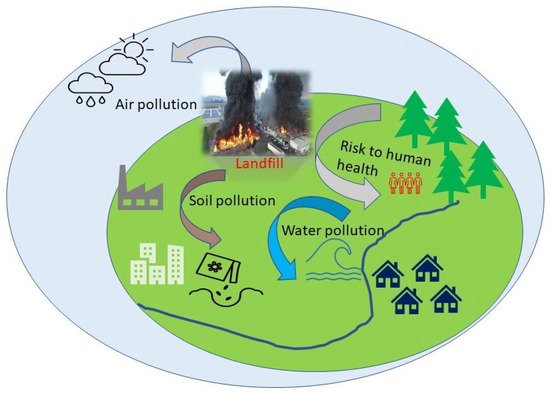In the urban solid waste treatment system, landfill has long been widely used worldwide as an economical and efficient treatment method. However, this process is inevitably accompanied by the continuous release of greenhouse gases, especially methane, and if it is not properly managed, it may also cause safety accidents such as explosions and fires due to leakage. Therefore, establishing a complete monitoring and response mechanism is a core issue in landfill safety management and environmental protection.
I. Common Causes And Hazards Of Methane Leakage Incidents
Methane is a flammable, explosive, colorless and odorless gas that is usually produced in large quantities during the anaerobic decomposition of garbage organic matter. In a landfill, if the gas guide system is aging, soil settlement destroys the sealing layer, the sealing exhaust well is damaged, the discharge is not smooth, or rainwater infiltration disturbs the gas balance, it may cause methane to accumulate and leak to the surface or underground space. Once an ignition source is encountered, the methane concentration will have a strong explosion risk when it is between 5% and 15% by volume. Therefore, efficient perception and rapid disposal of methane leaks have become the prerequisite for landfill safety and sustainable development.
Ⅱ. Limitations Of Traditional Disposal Mechanisms
In the past, landfills mostly relied on regular manual inspections and a limited number of fixed probes to obtain methane concentration data. This approach has several obvious shortcomings:
Response lag: Due to the low monitoring frequency, the gas is often discovered only after it accumulates to a dangerous concentration or an accident occurs;
Many blind areas: The landfill area is large and the terrain is complex, and it is difficult to fully cover fixed-point monitoring, and there are a large number of leakage risk areas that are not monitored;
Serious data faults: Manual records are prone to errors, and the data lacks continuity and integrity, making it difficult to use for trend analysis and risk prediction;
Disposal process is scattered: The information transmission chain in the traditional mechanism is long, and the disposal response lacks a standardized process, which is very easy to fail at a critical moment.
In the face of increasingly stringent environmental protection regulations and the public’s growing concern about environmental safety, building a linkage mechanism from “multi-point perception” to “intelligent decision-making” to “rapid response” has become an industry necessity.
Ⅲ. Intelligent Monitoring System Driven By TDLAS Technology
At present, advanced methane detection equipment has widely adopted tunable semiconductor laser absorption spectroscopy (TDLAS), which can achieve long-distance, non-contact, and high-precision gas concentration measurement by emitting a laser beam of a specific wavelength and measuring the absorption rate of methane.
In landfills, TDLAS technology equipment shows the following key advantages:
Extremely high sensitivity: It can detect methane concentrations at the ppmv level, which is suitable for early micro-leak identification;
Fast response speed: The detection process responds in milliseconds, significantly shortening the time window from problem discovery to alarm;
Strong environmental adaptability: It is not affected by complex environmental factors such as humidity, dust, and wind speed, ensuring data stability;
Flexible deployment capability: The equipment can be installed near gas wells, slopes, and gas collection stations, and can also be integrated into platforms such as drones and mobile inspection vehicles;
Easy data fusion: It has good adaptability to wireless communication systems and background platforms, and can realize real-time data upload, centralized analysis and early warning.
By building a “multi-point-multi-source-real-time” monitoring network with TDLAS as the core, the landfill can form a gas safety perception system without blind spots, providing reliable data support for the subsequent response mechanism.
Ⅳ. Building a Linkage Emergency Response Process
The key to handling methane leaks lies in “fast” and “accurate”. To this end, the emergency response mechanism needs to be systematically designed around the three core links of intelligent early warning, automatic response, and efficient scheduling.
1. Intelligent early warning: data-driven dynamic perception
Through the monitoring network equipped with TDLAS sensor equipment, continuous collection and intelligent analysis of data from each monitoring point in the landfill area can be achieved. Once the methane concentration in a certain area rises rapidly in a short period of time, even if it does not exceed the safety threshold, a trend warning can be triggered.
The platform can simulate the leakage path and generate a heat map based on parameters such as wind speed, wind direction, and air pressure, combined with the terrain model, to provide visual information for on-site personnel and guide the rapid location of the problem source.
2. Automatic response: rapid closed-loop information transmission
The monitoring platform is linked with the site emergency broadcast, on-site operation system, and on-duty personnel terminal equipment. Once the risk is identified, the platform can automatically push notifications to the corresponding responsible person’s mobile phone or operation panel, and activate the disposal process template to avoid human misjudgment and command delays.
Some advanced systems can also be integrated with geographic information systems (GIS) to retrieve historical gas diffusion data, equipment operation records, soil structure models, etc., to assist the emergency team in making scientific decisions.
3. Efficient dispatch: multi-platform collaborative disposal
For on-site disposal, a multi-skilled emergency team with rapid response capabilities should be established, equipped with handheld laser detectors, positive pressure respirators, explosion-proof tools and other equipment. Under the guidance of the platform, the leakage area is quickly blocked, and mobile devices are used to re-measure the points and locate the leakage source.
If the site is large or the terrain is complex, drones equipped with laser detection modules can also be dispatched to conduct aerial scanning of highlands, slopes, and areas above exhaust pipes to form a three-dimensional leakage distribution map to achieve rapid and accurate intervention.
V. Construction Of Long-Term Mechanisms And Management Systems
An effective disposal is just the beginning. A truly sustainable safety system also requires full-process review and mechanism iteration after the accident:
Data archiving and risk rating: Archive the detection, response, and repair data of the entire process of this leakage incident to improve the risk database;
Inspection plan optimization: Adjust the subsequent inspection frequency and point layout of the corresponding area to prevent repeated incidents;
Staff training and drills are normalized: Organize regular leakage drills and equipment use training to improve the overall team’s practical ability;
Equipment maintenance and technology iteration: Establish a maintenance, calibration, and upgrade system for detection equipment to ensure monitoring accuracy and system stability.
With the advancement of the concept of smart landfills, the methane detection and response system will no longer be an independent module, but one of the core modules integrated into the environmental big data platform, promoting the transformation from “post-event governance” to “pre-event prevention and control”.
VI. Conclusion
As a high-risk event in landfill operations, the handling of methane leakage should not remain at the level of “temporary response”, but should build a forward-looking, systematic, and efficient modern emergency response system. Relying on advanced methane detection technologies represented by TDLAS, combined with the intelligent analysis and automatic linkage capabilities of the digital platform, landfills can achieve early identification, rapid response, accurate positioning and efficient disposal of leakage risks, ensure environmental safety and improve governance levels.
YOU MAY ALSO LIKE: Discover Top 6 The Best Landscape Places in the World











